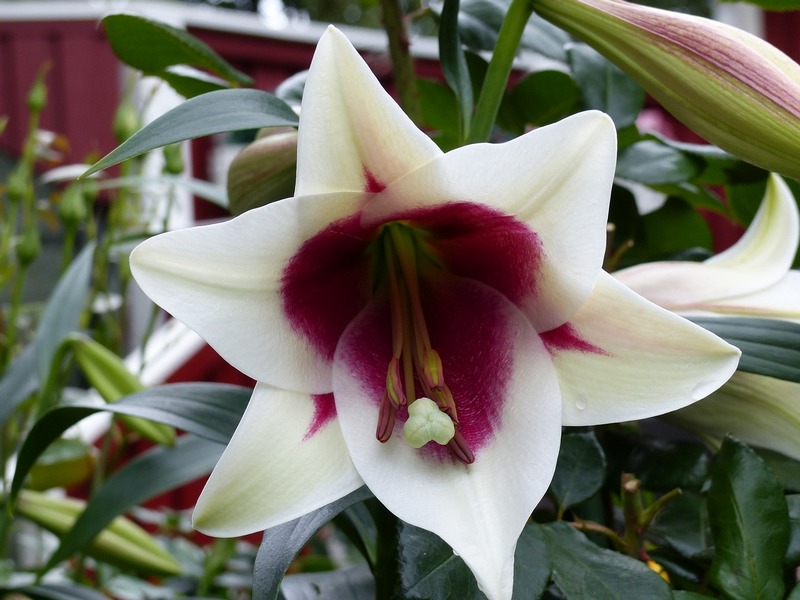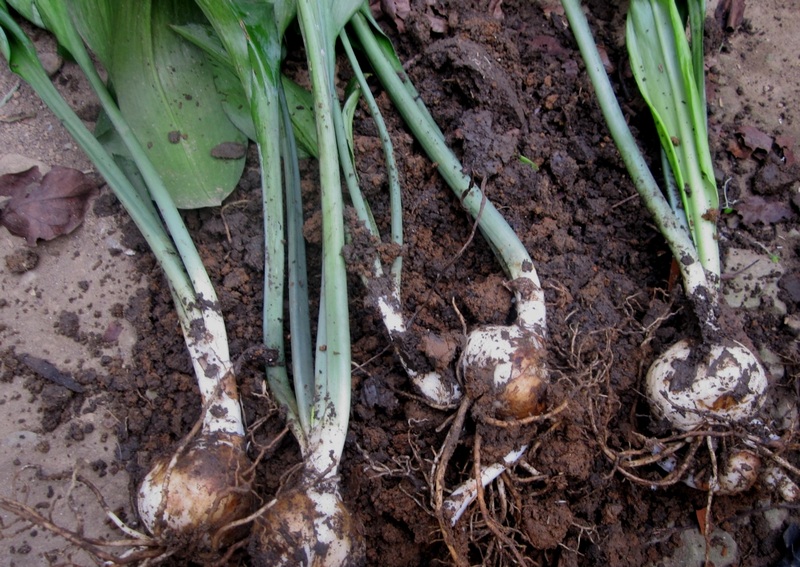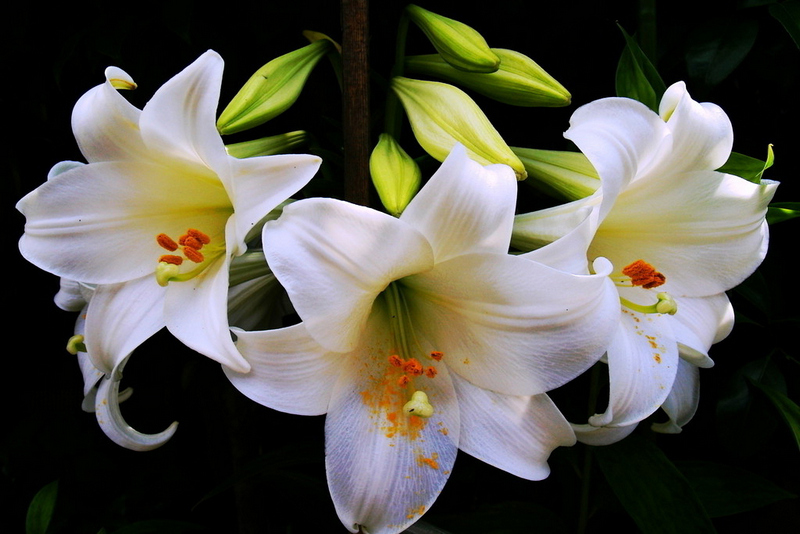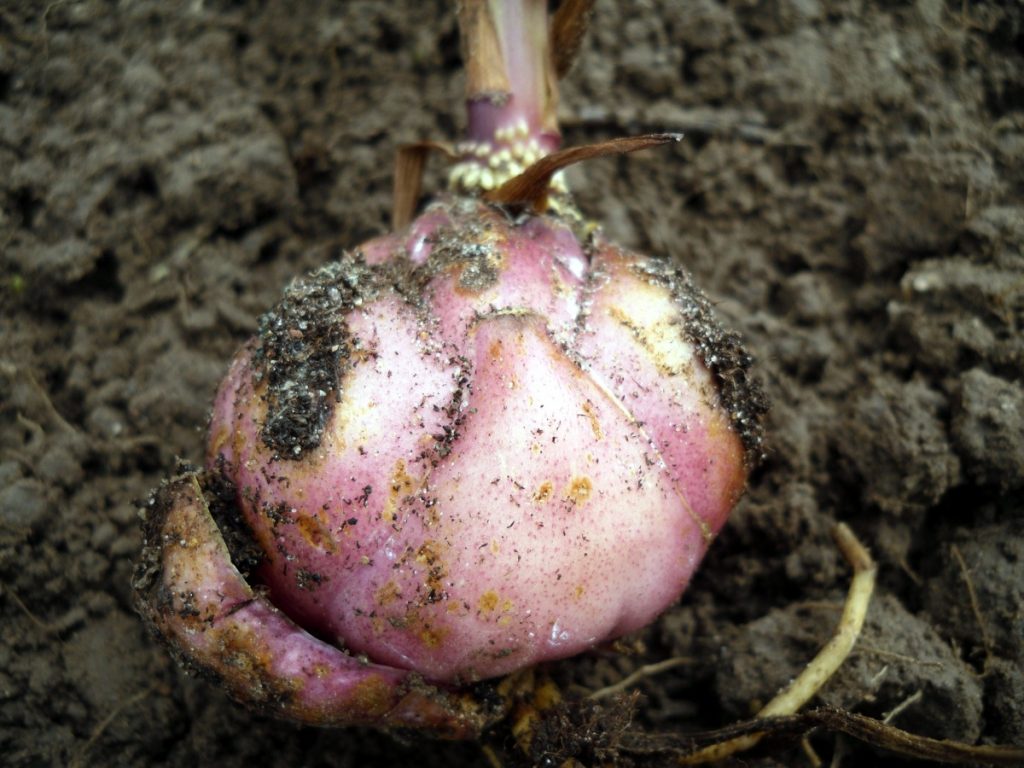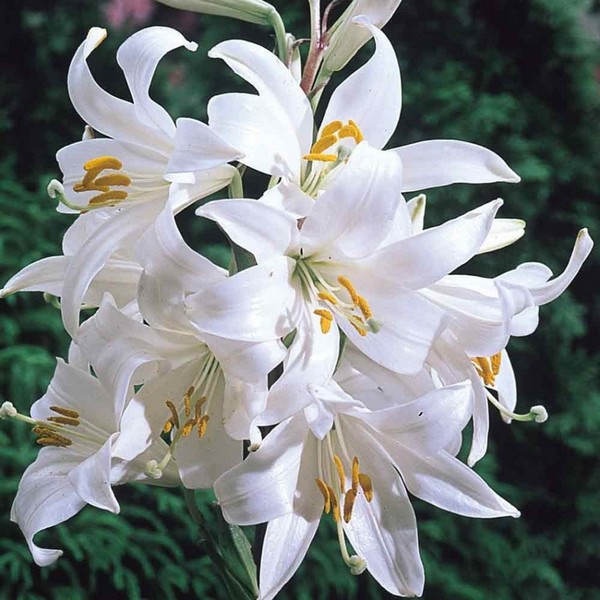Content:
According to an ancient Greek legend, once the goddess Hera, while feeding the newborn Heracles, dropped a few drops of milk on the ground. From them, beautiful delicate flowers sprouted, which people called lilies. Looking at the beauty of this plant, it is easy to believe in its divine origin. Today there are a great many lilies. When caring for this flower, there are general rules that it is advisable to adhere to so that the plant bestows luxurious flowering on its owner.
Outdoor care for lilies
Lily is a perennial flowering plant from the Liliaceae family. In translation, the name of the flower means "absolutely white", but today it has a variety of colors of petals. All lilies have in common that they have 6 petals and the same number of stamens.
The shape of the inflorescence can be very diverse - bell-shaped, funnel-shaped, cupped, star-shaped. Plant stems are tall, erect. The leaves are elongated, glossy. The underground part of the flower consists of roots and a bulb, serves as a source of nutrition and a reproductive organ for culture.
According to the classification, all lilies are divided into 4 groups, in each of which there are many varieties:
- Oriental hybrids are adapted for growing in the middle lane and southern climatic zones of Russia. They have inflorescences of various shapes and colors. Their disadvantages include vulnerability to fungal and viral diseases.
- American hybrid lilies. Can be bred in mid-latitudes. Unpretentious to growing conditions. The color of the petals is often pink or lilac with red specks.
- Candidum. Quite a whimsical variety. Flowers can be tubular or funnel-shaped, white and yellow in color, have a pleasant aroma.
- Asian hybrid lilies. Plants are undemanding to growing conditions, winter-hardy. Their inflorescence is cupped. The color can be white, yellow, pink, orange and multicolored.
The main principle in caring for lilies is proper watering. It must be carried out at the root when the topsoil dries out. Watering frequency is adjusted according to the weather. If lilies need feeding, they can be added directly to the water for irrigation. In the first year after planting, the lilies appear weak. For their active development, you need to prevent them from blooming.
In the second and third years after planting, the plant has a peak of its flowering, and in the fourth year, the number of buds decreases, so the plant needs to be fertilized. Due to the abundance of large inflorescences, the stems can break off, so you need to create a support for the lilies.
Planting lilies outdoors in summer
Lilies can be planted in spring, summer and autumn. Each season it will have its own characteristics. Planting dates largely depend on the acquired planting material. In the spring, the bulbs are planted, which must be kept in the refrigerator to contain their growth. Once the ground has thawed, the bulbs can be planted. If the soil is damp, you do not need to water the plants after planting. At the same time of the year, the flower can be propagated by stem cuttings.
Not everyone knows if lilies can be planted in July or another summer month.Planting a crop at this time of the year is carried out when the plant is bought by the flowering and is in a pot or dug out on the site along with an earthen lump. The autumn planting of lilies is considered the most favorable in time. It can be produced from the second half of August to the end of September.
If we talk about the summer planting of lilies, it is most suitable for Asian hybrids and Candidum varieties. By purchasing these plants in bloom, the gardener gains the advantage that the beauty of the flower is immediately visible and a change of variety in this case is impossible. But here it should be borne in mind that the seedlings sold in June and July were artificially stimulated in a greenhouse. After planting in open ground, the plants will hurt, flowering may be delayed for several years.
Planting lilies in July is also suitable for La hybrids. At the same time, you can transplant snow-white lilies, the bulbs of which are in a dormant period. It is recommended to plant them using the transshipment method in July. Bulbs of other types are best purchased for planting in late August. They need to be landed as soon as possible after the purchase so that roots can grow before the frost begins.
The correct bulb must meet the following criteria:
- be juicy and elastic, without traces of rot and other damage;
- living roots must be at least 5 cm long;
- it is better to choose bulbs with a diameter of 3 cm or more, smaller specimens will be able to bloom only after 2 years.
The best is the size of the bulb with a diameter of 12 to 16 cm. It is not recommended to purchase dried out bulbs, which do not have sprouts and live roots. Such planting material needs special care and the timing of flowering of these lilies is difficult to determine.
When choosing a landing site, preference should be given to a well-lit area. Lilies can grow in the shade, but the bush will be low, and the inflorescences will be less bright, not large enough. The flower bed must also be protected from the wind. Before planting, you need to dig up the ground and remove the remaining roots of other plants.
The culture does well next to other flowers. The main thing is that they are not too high and do not create shading. It is for this reason that you should not plant lilies near shrubs and trees. These flowers prefer fertile, loose, permeable soil. At present, breeders have also bred varieties that are less whimsical to the quality of the soil, but still lilies do not tolerate heavy loams.
Fertilize the soil before planting. To do this, it is dug up with humus, compost (a bucket per 1 square meter). If sand predominates in the composition of the soil, phosphorus-potassium fertilizer will be a good option for feeding, which is applied at the rate of 100 g per 1 square meter.
Planting depth will depend on the type of soil. In heavy soil, small bulbs are buried by 5-6 cm, and large ones by 13-16 cm. Loose soil requires a slightly deeper planting. When planting between plants, an interval of 25 cm should be observed.
How to plant a crop correctly
The planting process will differ depending on how the plant was purchased. It can be just a bulb, sprouted planting material, a lily in the flowering stage.
With flowers
When buying a flowering lily for planting, you can not only choose the color of the plant, but also make sure that it is healthy. Indeed, often the bulbs affected by the virus do not have external signs of the disease, the symptoms appear only after the appearance of the aerial part. How to plant lilies in the summer with flowers?
When transplanting from a pot, it is not necessary to free the roots and bulb from the earthy coma, so as not to injure them. The depth of the hole should be 7 cm more than the height of the pot. This is exactly the thickness of the sand layer placed under the plant.Before placing a flower in the hole, you should throw 1 tbsp to the bottom. l. superphosphate. The planted plants are well watered. For the next two weeks, it is necessary to monitor the moisture content of the soil, preventing it from drying out, then the flower will take root well.
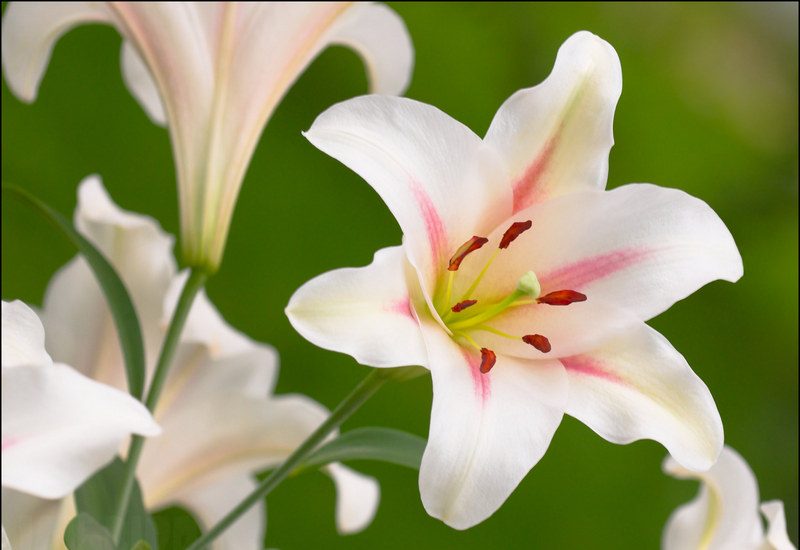
When buying a flowering lily for planting, you can not only choose the color of the plant, but also make sure that it is healthy
If you had to plant lilies at the end of June, it is recommended to cut off the inflorescences at the top of the bush. In this case, flowering next season will delight the owner of the site. If the flowers are not removed after planting, only one or two buds will form the next year. The stems are left on the plant until late autumn. It is in the leaves that the synthesis of nutrients takes place, which are redirected to the bulb.
With sprouts
In the summer, there should be no sprout breaking through on the lily bulb. If it is, it means that the life cycle of the plants is knocked down. It is possible to plant such material in open ground, but you need to prepare for the fact that during frosts the sprout will die off and next season the bulb will not germinate, but will sit in the ground. Only after a year does such a bulb germinate and give flowers, so the place of its planting must be somehow marked in order to remember its location in the flowerbed.
If the sprout is directed to the side, it is necessary to plant such a bulb not traditionally, with the roots down, but so that the stem bud is located vertically. Subsequently, the bulb will change the growth of the roots and everything will happen as expected. Leaving the sprout before planting or cutting it off does not really matter. This will not affect the further development of the plant. Otherwise, the principle of planting a bulb with a sprout in summer is the same as for non-sprouted bulbs.
Bulbs
The basic rule when planting bulbs is to plant lilies to a second depth greater than their diameter. Planting tall varieties should be done a little deeper. The same goes for the lily with stem roots. Varieties that give a surface leaf outlet are planted to a depth of 2 cm.
The longer the underground part, the more babies are formed on the mother's bulb. The landing pattern is chosen from three options:
- one-line tape planting, in which the distance between the bulbs is from 5 to 15 cm, and between the lines is 50 cm;
- two-line tape planting is suitable for medium-sized plants - a distance of 15-25 cm and 25-30 cm between the lines is maintained between the bulbs, and the ribbons should be 70 cm apart from each other;
- the three-line ribbon planting is suitable for low-growing varieties - a distance of 10-15 cm is maintained between the bulbs, and the interval between the ribbons and the lines is the same as for a two-line planting.
The bulbs must be planted on a sandy pillow. They are sprinkled with soil on top, watered and mulched with peat.
Growing tips from experienced growers
How to properly grow these luxurious flowers? What kind of care do they need? Watering lilies has its own characteristics. This culture should be moistened as often as possible, but in small portions. From excess moisture, the bulbous plant can rot. But these flowers tolerate a slight drying out of the soil perfectly. To make it easier to regulate the irrigation regime, use mulch.
OT hybrids are especially in need of mulching, in which supra-luminal roots are formed. When roots appear above the soil surface, add additional soil. It would also be good to plant low-growing perennials near the lily, which will prevent moisture from evaporating too quickly. The best watering time is from morning to 14-15 hours. By nightfall, the soil should dry out slightly.
When applying dressings, remember that lilies do not tolerate organic matter.It is better for them to use mineral fertilizers. When the bulbs begin to sprout in early spring, you can start feeding them with potassium nitrate every 2 weeks until the end of June.
If the flowers are grown for a bouquet, you need to cut them correctly. Most of the flower stalk must remain in the flower bed to feed the bulb. It is recommended to powder the cut area with wood ash, and then apply medical glue. This measure will prevent stem decay.
After flowering, wilted flowers are removed, preventing the seeds from setting. After the leaves turn yellow in autumn, the stems are cut at a height of 10-15 cm from the ground. In this form, the plants are left to winter. In the spring, the old "hemp" is removed. It is recommended to insulate the flower bed before wintering.
If the winters are frosty, it is better to arrange a multilayer shelter from leaf litter, spruce branches and peat. From above, you can cover the flower bed with foil and fix the insulating layer. In the spring, it is important to free the plants from shelter in a timely manner, before sprouts begin to appear.
Summer planting of lilies has its own pros and cons to keep in mind. Taking into account all the peculiarities of the variety, planting the bulbs correctly and caring for the culture, these charming flowers will be able to unfold in all their beauty and give the pleasure of contemplating them.
